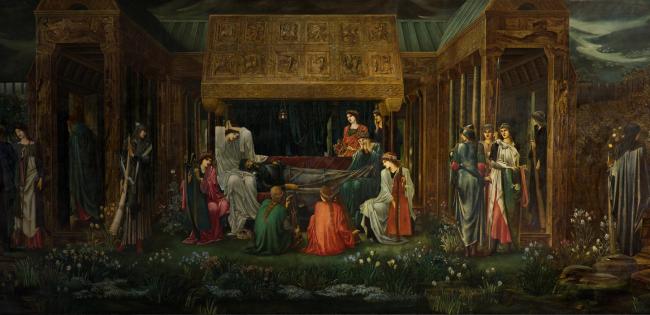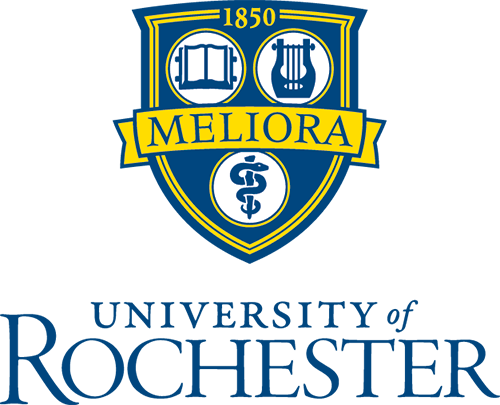
University of Rochester Libraries, in collaboration with guest curators Barbara Tepa Lupack and Alan Lupack, have undertaken an ambitious project to explore the King Arthur legends and the impact on popular culture, art, and literature.
Drawing from the Lupack’s collection, “Visualizing Camelot” is a year-long exhibition of more than 350 items related to the Arthurian legend that celebrate the ongoing appeal of the Arthurian legend, especially in England and America.
“One of the goals for an exhibit like this is to draw in new audiences and engage people in different ways,” said Jessica Lacher-Feldman, Exhibitions and Special Projects Manager for Rare Books, Special Collections and Preservation and the exhibition designer for Visualizing Camelot. “We welcome all to come and spend time with this rich and diverse exhibit, and one which many UR students had a hand in the numerous components of the work.”
The exhibit opened on March 7 with an opening reception in Rush Rhees Library sponsored by the Friends of the University of Rochester Libraries. Attendees were able to view items in the Rossell Hope Robbins Library, Rare Books, Special Collections, and Preservation, and the Friedlander Lobby.
Continuing through December 2, 2024, the exhibit reveals the diverse ways that the stories of Camelot have been imagined and visualized, both in high culture (paintings, drawings, illustrated books) and in popular culture such as films, toys, games, comic books, cartoons, dishware, product names, and business logos. An added option is that a complete version of the exhibit in Rush Rhees can be seen in-person, or virtually via the digital exhibit.
“We worked very hard to create a digital exhibit that would launch at around the same time as the opening for the physical exhibit,” Lacher-Feldman said. “This was an exciting challenge. Additionally, work has been done to develop an exhibition catalog which is not something that we do very often.”
Among the wide array of programming throughout the year was a film series in April and May featuring cinematic presentations of King Arthur and his court. The films screened at the Dryden Theater in the George Eastman Museum included: “A Connecticut Yankee in King Arthur’s Court (1949), “Knights of the Round Table” (1953), “The Sword in the Stone” (1963), “Monty Python and the Holy Grail” (1975), and “Excalibur” (1981).
“Visualizing Camelot” is free and open to the public when each exhibit space is open.
About the Lupacks
Alan Lupack, a noted Arthurian scholar, and former director of the Robbins Library, is author or editor of numerous Arthurian studies, including Arthur, The Greatest King; Arthurian Drama; Modern Arthurian Literature; New Directions in Arthurian Studies; and The Oxford Guide to Arthurian Literature and Legend.
Barbara Tepa Lupack, the former academic dean at SUNY and New York State Public Scholar, is author or editor of more than 25 books, including The Girl’s King Arthur; King Arthur’s Crown; Adapting the Arthurian Legends for Children; and the recently published The Othering of Women in Silent Film.
The Lupacks have lectured and published widely on Arthurian topics. Together, they created The Camelot Project, a popular database of texts, images, and information about the Arthurian legends, and coauthored studies such as Arthurian Literature by Women, Illustrating Camelot, and the award-winning King Arthur in America.


